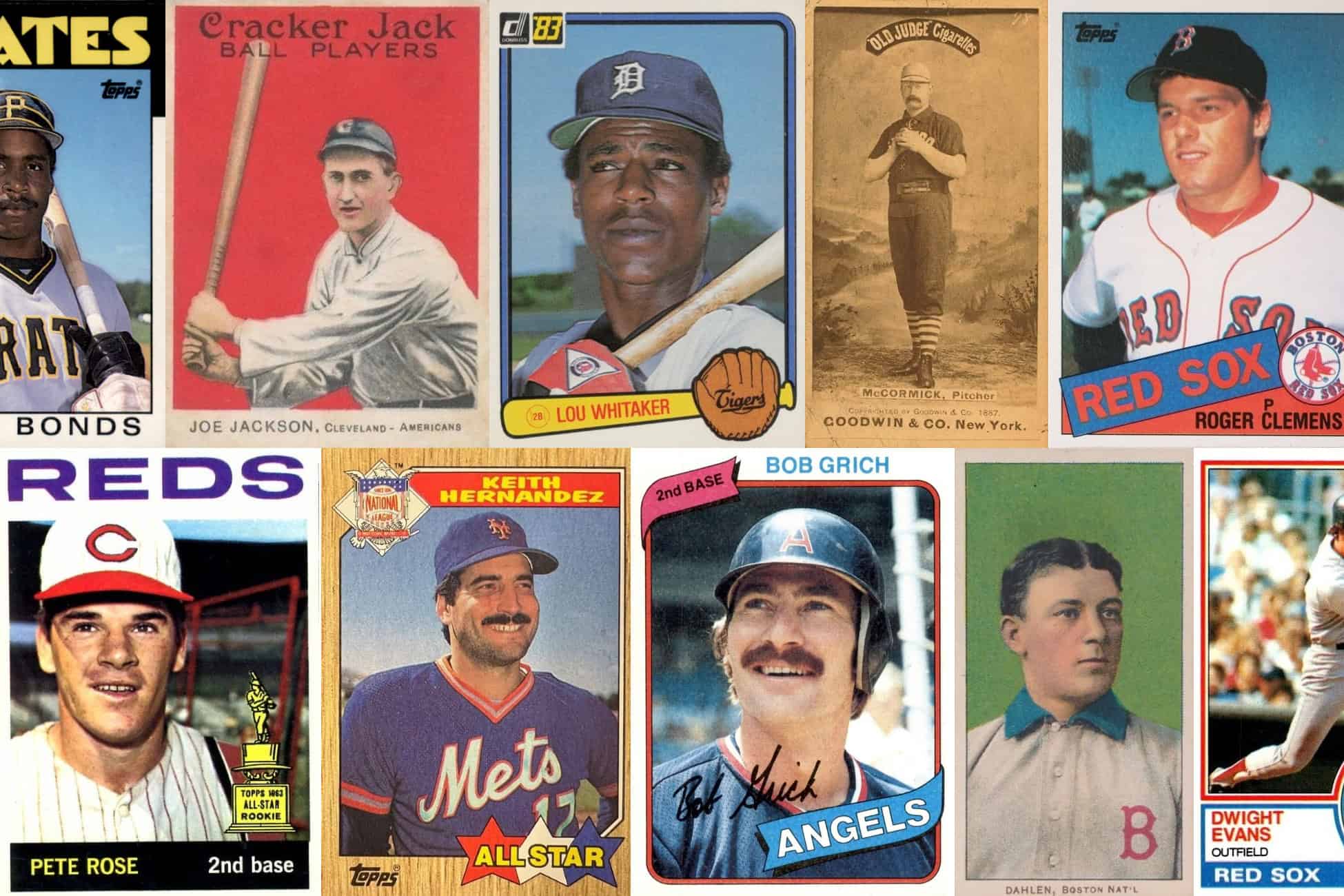Baseball fans love to debate the Hall of Fame. More than in any other sport, questions like Big Hall vs. Small Hall, short careers, and statistical milestones keep fans engaged. Controversies such as performance-enhancing drugs (PEDs) and the Black Sox Scandal add endless fuel to the debate. Is the Hall of Fame for the best players or the best people? One of the most interesting and hotly-debated conversations ins the “Hall of Fame snubs” debate.
Every fan has a list of players they believe voters wrongly left out – stars with 500 home runs, 3,000 hits, or long runs of dominance who never received the game’s highest honor. From legends tied to scandal to overlooked stars from small-market teams, the snub list reflects changing standards and evolving voter values.
This article looks at some of the most notable Hall of Fame snubs – players with credentials strong enough for a Cooperstown plaque. Some fell short due to controversy, others due to bad timing or poor media support. Their omissions still stir outrage and fascination. As the voting process evolves, these players may finally get in – or remain symbols of a flawed system.
In or Out? Comparing Hall of Fame-worthy Careers
Alan Trammell vs. Lou Whitaker: A Tale of Two Tigers
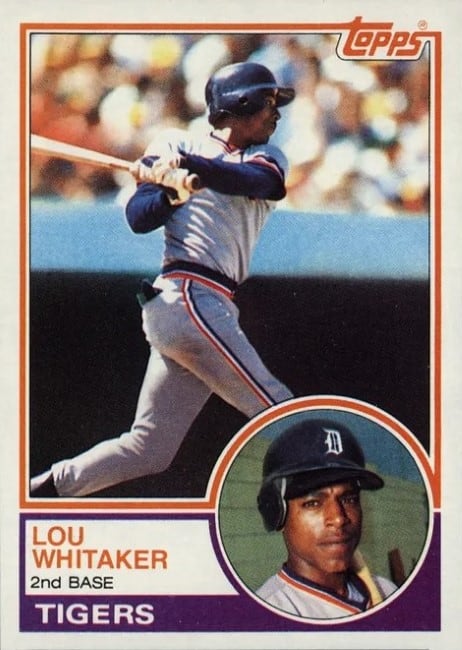
Alan Trammell and Lou Whitaker spent nearly two decades anchoring the Detroit Tigers’ middle infield. They formed one of the longest-running and most productive double-play combinations in baseball history. Trammell, a six-time All-Star and four-time Gold Glove winner, was also the 1984 World Series MVP. He compiled over 2,300 hits while playing exceptional defense at shortstop. Despite these achievements, his path to Cooperstown was not easy. He debuted on the Hall of Fame ballot in 2002 and never received more than 40% of the vote from the Baseball Writers’ Association of America (BBWAA). It wasn’t until 2018 – after aging off the writers’ ballot – that he was finally inducted by the Modern Baseball Era Committee. This move was widely seen as correcting a glaring oversight.
Whitaker’s case remains even more puzzling. A five-time All-Star, three-time Gold Glove winner, Whitaker finished his career with 2,369 hits, 244 home runs, and nearly 75 career WAR – marks that surpass several second basemen already enshrined. He even beat out Trammell for the 1978 Rookie of the Year award. Yet when his name first appeared on the Hall of Fame ballot in 2001, he received just 2.9% of the vote, far below the 5% threshold needed to remain under consideration. His immediate removal from the ballot shocked many fans and analysts, especially given how closely his career mirrors that of Trammell.
Statistical Comparison
| Years | MVP | Gold Glove | All-Star | Avg. | OBP | Hits | HR | RBI | bWAR | |
|---|---|---|---|---|---|---|---|---|---|---|
| Alan Trammell | 1977–1996 | 0 | 4 | 6 | .285 | .352 | 2,365 | 185 | 1,003 | 70.7 |
| Lou Whitaker | 1977–1995 | 0 | 3 | 5 | .276 | .363 | 2,369 | 244 | 1,084 | 75.1 |
For players who logged over 4,600 games between them, Lou Whitaker and Alan Trammell stand as the ultimate example of two inseparable resumes. The teammates had nearly identical hit totals, major milestones, and won the 1984 World Series championship. This suggests both or none should have been inducted. That one was elected and not is one of the questionable decisions of Hall of Fame voters.
For those who view the Hall of Fame as a place to honor consistent excellence and underappreciated greatness, Whitaker stands as one of the most egregious baseball Hall of Fame snubs still waiting for correction. While Trammell’s belated induction helped shine a spotlight on his longtime teammate, Whitaker has yet to receive justice from the Era Committees. As Hall voters continue to revisit the cases of Hall of Fame snubs, there’s growing momentum to ensure that “Sweet Lou” doesn’t remain the missing half of one of the game’s most iconic tandems.
Jim Rice vs. Dwight Evans: A Pair of Sox
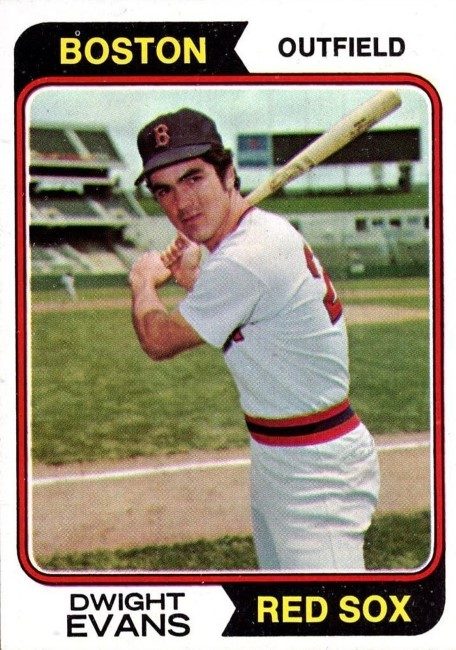
Jim Rice and Dwight Evans spent more than a decade as teammates on the Boston Red Sox, yet their Hall of Fame stories differ sharply. Rice, an eight-time All-Star and the 1978 American League MVP, brought power and intimidation to the plate. He led the league in home runs three times and RBIs twice. Over 16 seasons, he hit .298 with 382 home runs and 1,451 RBIs. In 2009, he made the Hall of Fame in his 15th and final year on the BBWAA ballot. A late push from traditionalist voters helped spotlight his peak dominance and run production.
Dwight Evans, by contrast, built his case on consistency and longevity. Across 20 seasons, he hit 385 home runs with 2,446 hits and 1,384 RBIs—almost matching Rice. But Evans also walked 1,391 times, more than double Rice’s total, boosting his on-base percentage. He earned eight Gold Gloves and ranked among the best defensive right fielders of his time. He also posted 66.9 WAR, well above Rice’s 47.7—a stat modern voters now view as crucial in Hall of Fame arguments.
Statistical Comparison
| Years | MVP | Gold Glove | All-Star | Avg. | OBP | Hits | HR | RBI | bWAR | |
|---|---|---|---|---|---|---|---|---|---|---|
| Jim Rice | 1974–1989 | 1 | 0 | 8 | .298 | .352 | 2,452 | 382 | 1,451 | 47.7 |
| Dwight Evans | 1972–1991 | 0 | 8 | 3 | .272 | .370 | 2,446 | 385 | 1,384 | 67.2 |
The gap between Rice and Evans may boil down to perception and timing. Rice fit the mold of a Hall of Famer—an intimidating slugger who delivered big numbers during the late 1970s. Evans offered a quieter kind of excellence. He showed patience at the plate, played elite defense, and brought value that often went unnoticed. In his era, stats like on-base percentage and WAR weren’t part of the mainstream conversation. Ironically, Evans ended his career with more home runs than Rice. While Rice eventually earned induction, Evans fell off the ballot after just three years. He never received more than 10.4% of the vote.
In recent years, his case has drawn fresh interest. As advanced metrics take center stage in Hall of Fame debates, Evans looks increasingly like a player who was ahead of his time. Analysts now rank him among the most underrated stars of his generation. Whether the Era Committee will right that wrong remains uncertain. Still, the comparison to a Hall of Famer like Rice shows that Evans’ career deserves another look.
Tony Perez vs. Keith Hernandez: First Base, Second Thoughts
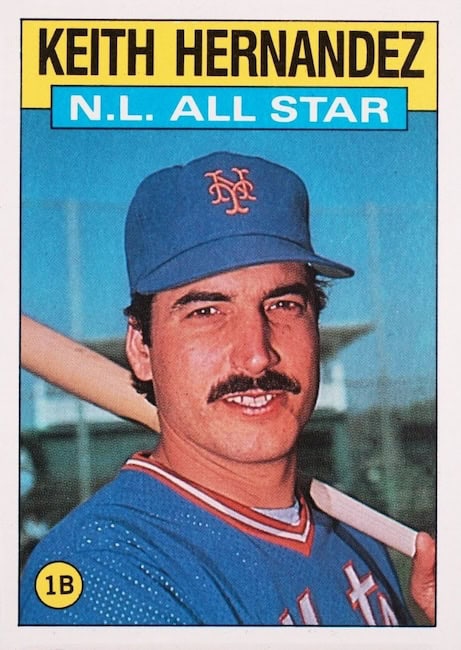
Tony Pérez earned his Hall of Fame induction in 2000 as a beloved member of Cincinnati’s Big Red Machine, known for his clutch hitting and leadership. Over 23 seasons, he hit 379 home runs, drove in 1,652 runs, and made seven All-Star teams. Perez was never the most statistically dominant player on his team, but he was seen as the emotional core of a dynasty and a steady run producer in the middle of the lineup. Voters rewarded him for his consistency, longevity, and big-game reputation, even though his career WAR (Wins Above Replacement) of 54.0 is modest by Hall standards.
Keith Hernandez, by contrast, remains on the outside despite arguably stronger credentials. He won 11 straight Gold Gloves – more than any first baseman in history – and redefined the position defensively. Offensively, he hit .296, reached base at a .384 clip, and collected over 2,100 hits. He won the 1979 NL MVP and played a pivotal role in the Mets’ 1986 World Series run. His career WAR sits at 60.3, well above Pérez’s. Yet BBWAA voters never embraced his case, and he dropped off the ballot after nine years with little support.
Statistical Comparison
| Years | MVP | Gold Glove | All-Star | Avg. | OBP | Hits | HR | RBI | bWAR | |
|---|---|---|---|---|---|---|---|---|---|---|
| Tony Pérez | 1964–1986 | 0 | 0 | 7 | .279 | .341 | 2,732 | 379 | 1,652 | 54.0 |
| Keith Hernandez | 1974–1990 | 1 | 11 | 5 | .296 | .384 | 2,182 | 162 | 1,071 | 60.3 |
The Pérez vs. Hernandez comparison highlights a philosophical divide in Hall of Fame voting. Pérez’s case leaned heavily on narrative – his key role on a legendary team and traditional counting stats like RBIs. Hernandez, on the other hand, represents a more modern candidate, whose value was rooted in OBP, defense, and advanced metrics that weren’t appreciated during his time on the ballot. While Pérez is enshrined, Hernandez has become a cult favorite and media personality, his Hall case gaining renewed attention but still waiting on a veterans committee decision.
Their stories serve as a reminder that Hall of Fame voting isn’t always about numbers alone – timing, team success, and public perception all shape a player’s legacy. And for Hernandez, the debate continues, with many now wondering if Cooperstown gave first base a second thought too late.
Bill Mazeroski vs. Bobby Grich: Love for the Glove
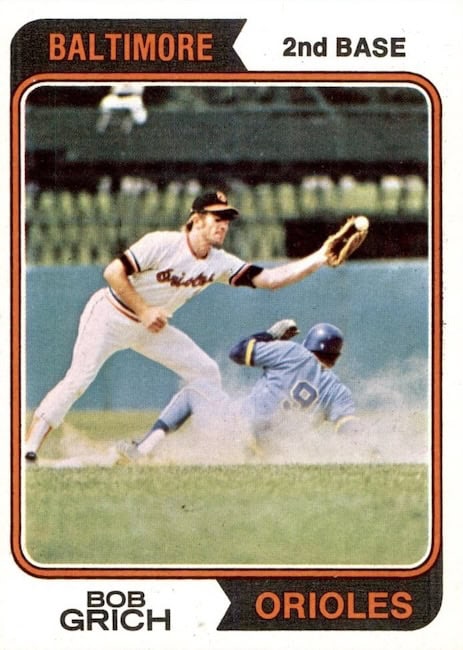
Bill Mazeroski and Bobby Grich rank among the finest second basemen in Major League Baseball history, both celebrated for their defense and consistent contributions over long careers. Mazeroski, inducted into the Hall of Fame in 2001, is best known for his iconic 1960 World Series walk-off home run. That blast gave the Pittsburgh Pirates their championship. However, his Hall of Fame induction stemmed mainly from his outstanding defense. Mazeroski, a 10-time Gold Glove winner, is regarded as one of the greatest fielding second basemen ever. His range, instincts, and double-play ability revolutionized the position. Offensively, his career was modest: a .260 batting average and 138 home runs in 17 seasons. While his offensive value was limited, his defense and clutch postseason play secured his legacy.
Bobby Grich, though lacking a singular defining moment like Mazeroski’s home run, was arguably a more complete player. Over 17 seasons with the Baltimore Orioles and California Angels, Grich earned three Gold Gloves and played key roles on both teams during the 1970s and ’80s. Offensively, he surpassed Mazeroski with a career .266 batting average, 224 home runs, and 864 RBIs. Grich was known for his on-base ability. He posted a career .371 OBP, and had power from second base – rare for his era. His advanced metrics also shine: Grich’s career WAR stands at 70.1, far higher than Mazeroski’s 42.3. Despite these advantages, Grich’s Hall of Fame candidacy struggled. He never gained significant support from BBWAA voters after his initial ballot appearances.
Statistical Comparison
| Years | MVP | Gold Glove | All-Star | Avg. | OBP | Hits | HR | RBI | bWAR | |
|---|---|---|---|---|---|---|---|---|---|---|
| Bill Mazeroski | 1956–1972 | 0 | 10 | 7 | .260 | .299 | 2,016 | 138 | 853 | 42.3 |
| Bobby Grich | 1970–1986 | 0 | 4 | 6 | .266 | .371 | 2,007 | 224 | 864 | 70.1 |
The comparison between Mazeroski and Grich highlights the subjective nature of Hall of Fame voting. While Mazeroski’s defense and World Series heroics earned him a place in Cooperstown, Grich’s far superior offensive output, combined with his excellent defense, has yet to resonate with voters. Grich’s lack of postseason accolades and his quiet, unassuming personality may have contributed to his lack of Hall of Fame recognition, while Mazeroski’s timeless defensive skills and iconic moment made him a more straightforward case for enshrinement.
Ultimately, the debate between Mazeroski and Grich comes down to differing views on the value of defense versus all-around performance. While Mazeroski’s impact on the game through his glove and clutch postseason moments is undeniable, many believe Grich’s combination of defense, offense, and longevity warrants a similar, if not greater, level of recognition, making him a Hall of Fame snub.
Hall of Fame Scandals
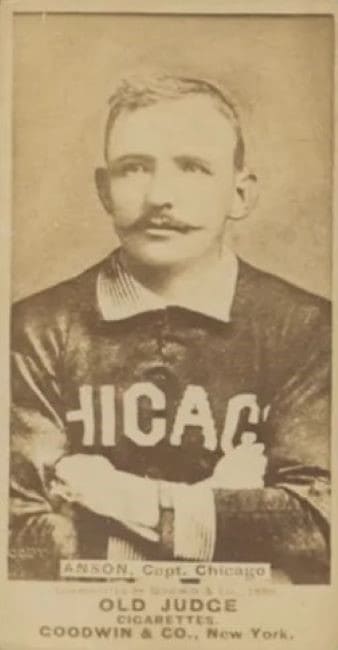
The “Character Clause” in the Baseball Hall of Fame voting process sparks some of the most intense debates regarding a player’s eligibility. This clause, part of the Hall of Fame’s voting guidelines, requires voters to consider not only a player’s on-field performance but also their personal character and integrity. While the clause seeks to preserve the Hall’s integrity, it often causes controversy, especially when players with stellar careers but questionable off-field actions – such as involvement in gambling, performance-enhancing drugs (PEDs), or other scandals – are under consideration for induction. The character clause raises questions about how much weight voters should give a player’s off-field conduct and whether it should outweigh their athletic achievements. Whether you support or oppose the clause often shapes your view on whether certain players should be inducted or excluded.
Cooperstown elected many players before the Hall of Fame emphasized the character clause. Instead, voting focused largely on on-field performance. In the Hall’s early years, personal conduct didn’t receive much scrutiny. Players with questionable character – like Cap Anson, Ty Cobb or Babe Ruth – were inducted based on their statistics and contributions to baseball only.
This early approach reflected the Hall’s initial focus on preserving the legacy of baseball’s greatest statistical performers. As societal values evolved, the Hall started adopting more holistic evaluations of candidates, factoring in personal conduct and off-field behavior. The introduction of the character clause responded to public perception of what it means to be a Hall of Famer, recognizing that a player’s character matters just as much as their on-field performance. Today, the character clause plays a significant role in modern Hall of Fame voting, though its application remains a hotly debated issue.
The Black Sox Scandal
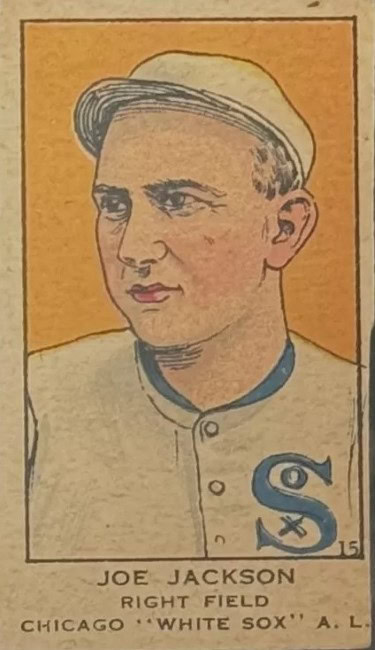
The 1919 Black Sox Scandal remains one of the most infamous episodes in baseball history and continues to influence Hall of Fame discussions. Eight members of the Chicago White Sox conspired to throw the World Series in exchange for money from gamblers, resulting in their lifetime ban from baseball. Although the court acquitted the players, Commissioner Kenesaw Mountain Landis banned them for life, and no one has reversed the decision. Among those banned was Shoeless Joe Jackson, whose exclusion remains one of the most debated Hall of Fame snubs to this day.
Jackson’s exclusion sparks controversy, particularly because of his performance in the World Series. Statistically, he ranked among the most gifted hitters of his era, and many debate the extent of his involvement in the scandal. He batted .375 during the 1919 World Series and committed no errors, leading many to believe he played to win. However, the lifetime ban made him ineligible for Hall of Fame consideration. The Black Sox Scandal left an indelible mark on the sport and established a precedent for how off-field behavior – real or perceived – could overshadow even the most extraordinary on-field performances. It also set the precedent that banned players from baseball would also be excluded from the Hall of Fame. This may soon change, as MLB lifted the ban on over a dozen players in May 2025.
Gambling and Pete Rose’s Ban
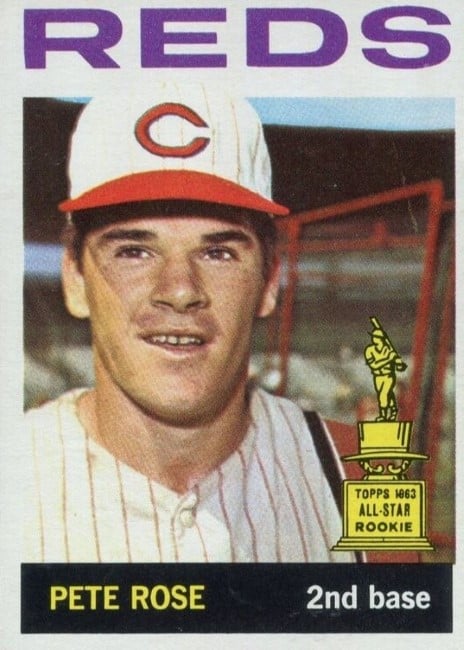
Pete Rose, the all-time hits leader in Major League Baseball, remains one of the most controversial figures in the sport’s history due to his lifetime ban for gambling on the game. In 1989, Major League Baseball’s commissioner, Bart Giamatti, led an investigation that found Rose had bet on baseball games while managing the Cincinnati Reds. Rose initially denied the allegations but eventually admitted to betting on games in 2004, after years of maintaining his innocence. His banishment from the sport prevents him from being inducted into the Baseball Hall of Fame and remains a highly debated issue in the baseball community. Rose’s actions, in which he alternately denied and admitted fault, complicate the matter.
People often discuss Rose’s case in the context of MLB’s strict rules against gambling, rules that aim to preserve the integrity of the game due to potential manipulation of games or player performances. Rose’s actions, although never shown to directly influence the outcome of games, raised concerns. Despite his records and accomplishments, including 4,256 hits and 17 All-Star selections, his ban continues to overshadow his legacy.
The debate continues about whether Rose should be reinstated, especially as attitudes toward gambling in sports evolve with the continuing legalization of sports betting. Now that betting companies actively sponsor sporting events, the line is growing grayer. Advocates for reinstating Rose argue that his impact on the game, both as a player and a manager, should earn him a place in the Hall of Fame. Critics, however, maintain that his actions set a dangerous precedent and that MLB must uphold its zero-tolerance policy to protect the game’s integrity. Regardless, MLB made the surprising decision to lift the ban on over a dozen players, including Rose, in May 2025. Rose’s initial ban remains one of the most significant and polarizing decisions in American sports history, igniting debate about whether he is one of the biggest Hall of Fame snubs ever.
Performance-Enhancing Drugs (PEDs)

The steroid era of the 1990s and early 2000s created a massive moral and statistical dilemma for Hall of Fame voters. Players like Barry Bonds, Roger Clemens, Mark McGwire, and Sammy Sosa rewrote the record books during this time. However, allegations and confirmations of PED use have cast long shadows over their careers. Bonds holds baseball’s all-time home run record, and Clemens ranks as one of the most dominant pitchers in history. Yet, neither has earned induction into the Hall of Fame, despite their clear Hall-worthy resumes. The BBWAA has taken a hard-line stance by keeping even the most statistically dominant players out of Cooperstown if they were associated with steroids. (Some never admitted to it or tested positive.)
This creates one of the most polarizing lists of baseball Hall of Fame snubs. Fans and analysts debate whether the Hall should represent moral purity, statistical greatness, or some mix of the two. While PED users are not technically banned like the Black Sox players, unwritten rules among voters have effectively excluded them. As many of these players have aged out of BBWAA eligibility, attention now turns to the various committees that could reconsider their cases in future years, and reverse their status as Hall of Fame snubs.
Controversial Opinions and Behavior
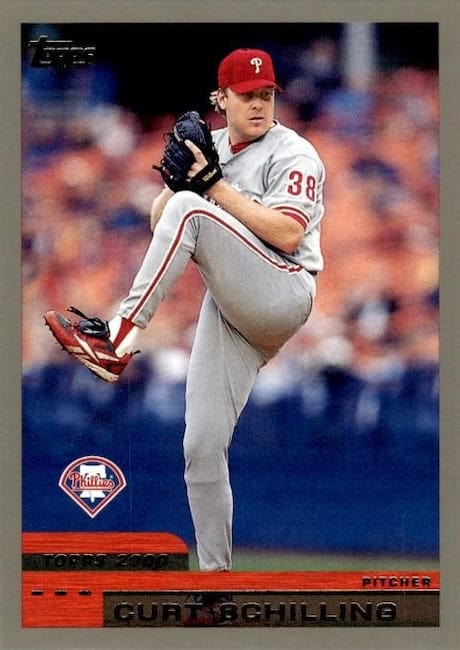
Curt Schilling presents one of the most complex cases in Hall of Fame history. On the field, his resume stands strong. He earned six All-Star selections, three World Series championships, and one of the best strikeout-to-walk ratios in MLB history. His postseason performances are legendary, especially his bloody-sock game in the 2004 ALCS. Schilling helped the Red Sox break their 86-year championship drought. Statistically and in terms of impact, Schilling ranks with, or surpasses, many pitchers already in Cooperstown.
However, Schilling’s off-field conduct has overshadowed his on-field achievements. Since retiring, he has sparked controversy with social media posts and the bankruptcy of his video game company, 38 Studios, which caused issues for Rhode Island taxpayers. These actions led some voters to withhold support, citing the Hall of Fame’s character clause. This clause asks voters to consider integrity, sportsmanship, and character alongside a player’s performance.
In 2021, Schilling asked to be removed from the ballot after falling short of induction. He expressed contempt for the voting process and writers. The Hall of Fame denied his request. (Schilling later aged off the BBWAA ballot without being elected.) His case now moves to the Contemporary Baseball Era Committee, where a smaller group of voters will decide his fate. Schilling’s case highlights a growing divide in Hall of Fame philosophy: should the plaque honor a player’s career alone, or should it reflect the institution’s values and its fans?
More recently, some voters have considered off-field conduct when evaluating players accused of domestic violence, such as Omar Vizquel. Once seen as a likely inductee, Vizquel’s candidacy has taken a major hit after allegations emerged. The Hall of Fame plaque increasingly represents not just athletic excellence but character, raising new ethical questions. As baseball grapples with its past and present, the line between scandal and exclusion remains debated.
Top 10 Hall of Fame Snubs
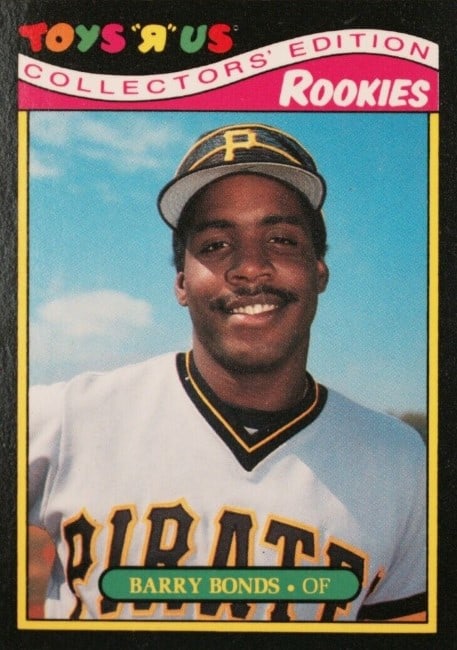
When considering all of these Hall of Fame snubs, we must ask: who are statistically the best retired players not in the Hall of Fame? While the controversy surrounding performance-enhancing drugs, off-field issues, and voter biases may play a role in their exclusion, many of these players boast undeniably impressive statistics that should warrant serious Hall of Fame consideration. In these cases, they are statistical Hall of Fame snubs, if not snubs due to personality or behavior. Some, like pre-1900s baseball players, remain snubbed simply because few people are examining their cases.
For this list, we’ll exclude active and recently retired players still within their five-year waiting period for eligibility. This includes players like Mike Trout (who may be elected when he retires) and soon-to-be elected players like Albert Pujols. Instead, we’ll focus on those who have already been passed over, or haven’t yet been voted in, despite their on-field achievements.
Barry Bonds (162.8 bWAR, 4th all-time)
Active years: 1986–2007
Bonds stands as one of the greatest baseball players ever, boasting incredible career achievements like 762 home runs and 7 MVP awards. However, allegations of performance-enhancing drug (PED) use have overshadowed his Hall of Fame candidacy. However, Bonds had unmatched on-field production and is, by bWAR, the 4th best player in the history of baseball. His stats speak for themselves. Despite the PED controversy, no one can deny that he dominated throughout his career, rewriting the record books in a way few others ever will.
Roger Clemens (139.2 bWAR, 8th all-time)
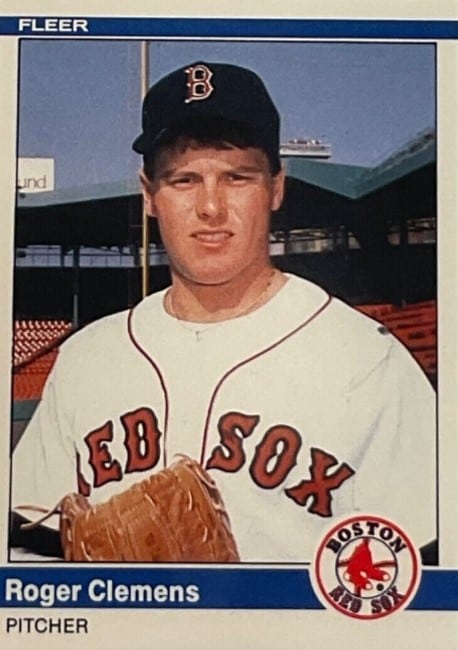
Active years: 1984–2007
Clemens ranks as one of the best pitchers in MLB history, with 7 Cy Young Awards and over 4,700 strikeouts. Like Bonds, his Hall of Fame candidacy has faced PED allegations, which have kept him out of Cooperstown. However, Clemens’ dominance on the mound – from 1984 to 2007 – remains undeniable. His strikeout totals and remarkable longevity make him one of the most accomplished pitchers ever, raising questions about whether his PED allegations should overshadow his on-field performance.
Alex Rodriguez (117.4 bWAR, 16th all-time)
Active years: 1994–2016
A-Rod was one of the most talented and complete players of his era, with 696 home runs, 3,115 hits, and a remarkable combination of power and speed. He served a suspension for PED use in 2014, which has hurt his Hall of Fame chances. Despite the steroid controversy, A-Rod’s numbers, including a 14-time All-Star selection and 3 MVP awards, place him among the game’s greatest players. His contributions on both sides of the ball, as well as his undeniable skill, make him a worthy Hall of Fame candidate.
Pete Rose (79.6 bWAR, 66th all-time)

Active years: 1963–1986
Rose is the all-time leader in hits (4,256), yet his lifetime ban from baseball due to betting on games had, as of May 2025, kept him out of the Hall of Fame. Rose’s biggest reason for induction is his unmatched hustle and consistency on the field, setting numerous records and being a key player in the success of the Cincinnati Reds’ “Big Red Machine.” His exclusion from the Hall of Fame is a direct result of his gambling issues, though many believe his incredible contributions to the game deserve recognition.
Curt Schilling (79.5 bWAR, 67th all-time)
Active years: 1988–2007
Schilling became one of the most dominant postseason pitchers ever, earning 3 World Series rings and building a reputation for his big-game performances. However, his Hall of Fame candidacy has faced challenges due to his controversial off-field statements and political views. Despite this, Schilling’s playoff success, career strikeout totals, and overall dominance on the mound make him one of the best pitchers of his era. Many believe his on-field achievements should outweigh his off-field controversies. Ironically, by requesting to be removed from the ballot (a request the Hall of Fame refused), Schilling positioned himself as one of the Hall of Fame snubs by his own actions.
Jim McCormick (76.2 bWAR, 78th all-time)
Active years: 1876–1887
McCormick played during the 19th century and had a career that included being one of the first to reach 200 wins. He’s one of the top Hall of Fame snubs because his career was in an earlier era with fewer records and modern statistics. McCormick’s major reason for induction is his role as one of the best pitchers of his time, with solid career numbers that still stand up to scrutiny when viewed in the context of the 19th-century game.
Bill Dahlen (75.3 bWAR, 86th all-time)
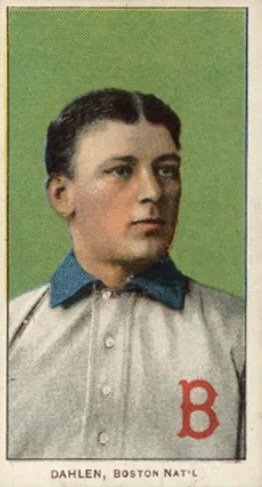
Active years: 1891–1911
Dahlen played a pivotal role at shortstop for more than two decades, contributing significantly to several teams in the late 19th and early 20th centuries. Known for his defensive prowess and leadership, Dahlen’s greatest case for Hall of Fame induction lies in his remarkable longevity and consistency, with over 2,400 games played. He also made key contributions to the development of the shortstop position. Despite being one of the best players of his era, voters have overlooked him.
Lou Whitaker (75.1 bWAR, 84th all-time)
Active years: 1977–1995
Lou Whitaker is perhaps the biggest of the “clean” Hall of Fame snubs. Whitaker was one of the best second basemen of his generation, known for his defensive prowess and steady bat. Despite a strong career with the Detroit Tigers, he has never garnered enough support from the Hall of Fame voters. Whitaker’s biggest case for induction is his consistent production throughout his career, including an impressive career WAR and 3 Gold Gloves. He was also a key figure on the Tigers’ 1984 World Series-winning team, yet has never been able to break through the voting threshold.
Rafael Palmeiro (71.9 bWAR, 94th all-time)
Active years: 1986–2005
Palmeiro hit 569 home runs and recorded over 3,000 hits, joining the rare club of players with both milestones. However, his 2005 suspension for PED use has severely impacted his Hall of Fame chances. Despite the steroid cloud, Palmeiro’s career numbers are historically significant. His case for induction lies in his impressive and consistent production over a long career, with a combination of power and durability that ranks among the best of his generation.
Bobby Grich (71 bWAR, 97th all-time)
Active years: 1970–1990
Grich was one of the most complete second basemen in baseball history, excelling in both offense and defense with a career that included multiple Gold Gloves and a high on-base percentage. Despite his all-around skills, Hall of Fame voters have overlooked Grich. His biggest argument for induction is his combination of exceptional defense, ability to get on base, and solid offensive production at a position that often lacks star power. Grich’s consistency over a long career should have earned him more recognition.
Conclusion
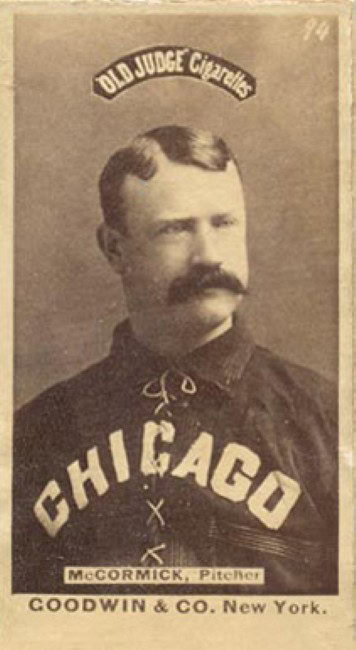
While the Hall of Fame remains baseball’s highest honor, its voting history reveals that greatness on the field doesn’t always guarantee enshrinement. Whether held back by controversies, misunderstood careers, or the shifting standards of different voting eras, many deserving players have been left on the outside looking in. Their absences serve as reminders that Hall of Fame debates are as much about perception and politics as they are about statistics.
Ultimately, the Hall of Fame snubs spark the same passion that fuels the game itself – endless arguments, generational loyalties, and evolving definitions of what greatness truly means. As time passes and voters reexamine legacies through a more nuanced lens, some of these names may eventually find their rightful place in Cooperstown. Until then, their stories continue to fuel baseball’s most spirited debates.
